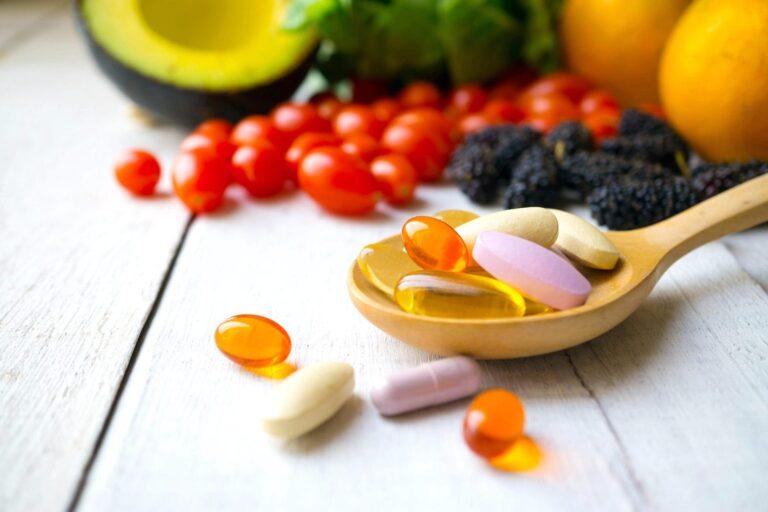The FDA has actually altered the appearance of the Nutrition Facts label.

/ post.healthline.com/wp-content/uploads/2018/11/Chips_Supermarket_Aisle-1296×728-Header.jpg?w=1575″ > Items on supermarket racks may look a little different thanks to new Nutrition Facts labels. Getty Images If you’re one to count calories
or if you shudder at the serving size whenever you round off a pint of ice cream, you may be a fan of the brand-new Nutrition Facts label that’s rolling out. The U.S. Food and Drug Administration (FDA)just recently revealed that the Nutrition Facts label is getting a little bit of a remodeling to show upgraded clinical research study– such as how diet plan is linked to chronic disease– along with how people in fact eat.
The FDA hopes the changes will assist consumers make smarter decisions about the foods they eat.
One of the greatest changes to the Nutrition Facts label is the addition of added sugars. These are the sugars and syrups added to drinks and foods during preparation.
Lots of producers use sugarcoated to improve tastes in their products. However, in excess, these sugars provide a serious health concern and add to the boost in diabetes, weight problems, and heart disease in the United States.
Before this label change, various kinds of sugars were lumped into an overall sugars category on the Nutrition Facts label. Numerous fruit yogurts consist of sugars from three sources: lactose from milk, natural sugars from fruit, and included sugars. All of these were tallied as one figure under total sugars.
The brand-new labels will identify added sugars to help people understand precisely just how much they’re eating, which shouldn’t be more than 10 percent of their day-to-day calories, according to the FDA’s dietary standards.
“The significance of making this part of the label is that customers will now be taking these added sugars into consideration when they go to purchase an item,” Amanda Nighbert, a registered dietitian who specializes in weight management, told Healthline.
“This included issue will ideally translate into manufacturers using [added sugars] less, which would be a win-win for the overall health of the U.S.,” she said.

The new labels have also
been adapted to consist of more precise serving sizes. Certain products which contain several portions will note not only the nutrition info per serving, but the nutrition details per bundle too.
These changes will likely be the first thing that catches your eye. The FDA is making these numbers bigger and bolder due to the fact that almost 40 percent of American adults are overweight. Obesity is linked to cardiovascular disease, diabetes, illness, stroke, and specific cancers.
“When a consumer picks up a 16-oz. bottle of Coke, in the past the serving size would have been 2.5. Who drinks half a 16-oz. Coke and puts it away till tomorrow? Nobody!” Nighbert said.
Customers most likely assumed that the nutrition details noted on the old labels was for the whole Coke bottle. Because the new labeling laws have been gotten used to what people actually eat, people will be less most likely to get puzzled about just how much they’re consuming.
“Portions are now more in line with what is actually consumed,” Nighbert continued, “for that reason seeing these bigger, more precise numbers will hopefully get [people] hesitating about what they are eating and drinking.”
While the old labels noted calories from fat, the new ones won’t. Research study has actually revealed that the type of fat consumed is more vital than total fats.
For example, monounsaturated and polyunsaturated fats– which are found in veggie oils and nuts– can lower the danger of heart problem when eaten in location of saturated and trans fat.
Since so many Americans are deficient in vitamin D and potassium, the brand-new labels will also include these nutrients. They’ll change the vitamin C and A counts, which are no longer needed since these vitamin shortages are rare nowadays.
“Many individuals fall brief in potassium and vitamin D, so I believe that it is a good idea these nutrients will now be consisted of on the label,” Summer Yule, a signed up dietitian based in Connecticut, said.
“Few foods naturally contain significant amounts of vitamin D, so I am questioning whether this labeling action will eventually lead to more vitamin D product stronghold down the road,” she included.
The upgraded nutrition information should help people end up being more familiar with what and how much they’re really consuming.
Nevertheless, what you should be consuming is going to be various for each and every person.
“A great deal of times the ‘much better’ option is going to depend upon what the client’s objectives are,” Yule stated. “Are they seeking to slim down or put on weight? Boost protein and/or fiber? It is not going to be the very same answer for every person.”
It’ll also take some time before you see these labels on grocery store shelves.
Under the new laws, manufacturers that make $10 million or more in annual food sales have until 2020 to update their food labels. Those that earn less than $10 million have until 2021.
Particular producers, which make up approximately 10 percent of packages offered, have actually already started utilizing the brand-new labels, the FDA reported.
While this is an action in the right direction, numerous individuals might still discover the nutrition info confusing.
Ultimately, it’s up to the consumer to find out how particular ingredients can affect their general health and use this brand-new details in their day-to-day food options.
This material was initially released here.
One of the greatest changes to the Nutrition Facts label is the addition of included sugars. Before this label modification, various types of sugars were lumped into a total sugars category on the Nutrition Facts label. Lots of fruit yogurts contain sugars from 3 sources: lactose from milk, natural sugars from fruit, and included sugars. Customers most likely presumed that the nutrition information listed on the old labels was for the entire Coke bottle. Under the new laws, manufacturers that make $10 million or more in yearly food sales have till 2020 to update their food labels.




















